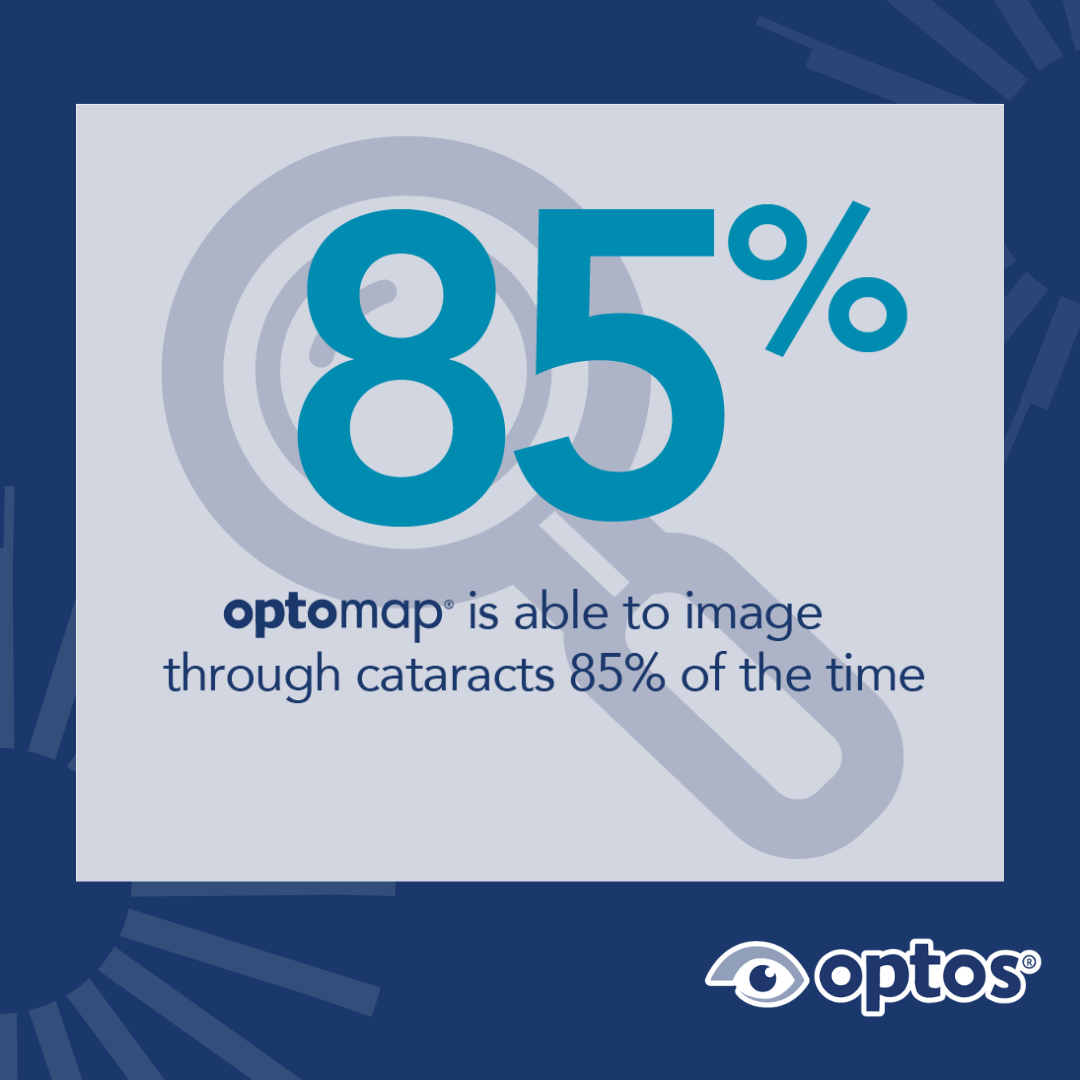Identifying Risks Prior to Cataract Surgery Utilizing UWF Imaging
In observation of Cataract Awareness Month, Optos unites with Prevent Blindness to further the education regarding cataracts. Cataracts remain the leading cause of vision loss and the US Centers for Disease Control and Prevention (CDC) estimates that 20.5 million Americans over the age of 40 suffer from cataract in either one or both eyes.
UWF Imaging Aides in Cataract Detection, Classification and Surgical Threats
Cataract disease is highly treatable and one simple step toward extending patients’ vision health is through comprehensive, annual eye examinations. According to studies, optomap is able to image through cataracts 85% of the time. The ability to quickly and easily observe and document retinal health before and after cataract surgery provides both the patient and practitioner a tremendous peace of mind.
The UWF view of an optomap image can be captured through hazy media where white light has difficulty penetrating, revealing problematic retinal issues prior to surgery. 1 Detecting of retinal tears before surgery, for example, can help reduce the occurrences of postoperative retinal detachment. 2
Using UWF technology, a deep-learning algorithm has recently been developed that enables stable posterior polar cataract (PPC) assessment. PPC has a higher risk of surgical complications such as posterior capsular rupture (PCR) during surgery. The early diagnosis enables surgeons to plan for hydrodelineation versus hydrodissection. 3
OptosAdvance software enables the sharing of optomap images between practices, which expedites a diagnoses pre- and post-surgical management plans. The optomap image improves documentation of retinal pathology, identifies risks for the surgical team to set up precautions during surgery and directs implant option. The access to immediate postoperative findings also sets a baseline for follow-up healthcare, assuring post-cataract patients.

The Importance of Education
Emphasizing the severity and commonality of cataract disease to patients is crucial. Literature about the disease should be readily available and shared to keep people aware of this illness. Prevent Blindness is a great resource for information, offering printable papers including the Facts & Myths About Cataract.
In a testimonial from Dr. Vince Young, OD, he explained that he introduced an Optos Daytona into his practice at the age of 40. Having clear vision and exhibiting no symptoms, Young volunteered to have his optomap® captured in part of a training for his staff. He was instantly concerned by the findings. His wife, Lindsey Brewer Young, OD immediately conducted a dilated exam that proved the abnormality was a posterior subcapsular cataract (PSC). Young uses the image as a tool to communicate the importance of optomap and comprehensive eye exams.
Pioneered by the organization Prevent Blindness, Cataract Awareness Month began in 1908 when a team of doctors took action to address that cases of blindness were both treatable and preventable. Today, higher quality care and sight-saving surgeries are available.
To learn how your practice would benefit from an Optos device, contact us today.
- Advances in Retinal Imaging of Eyes with Hazy Media: Further Studies. Wendy S. Chen; Thomas R. Friberg; Andrew W. Eller; Carlos Medina. ARVO. 2011.
- Combined Application of B-Scan Ultrasonography and Eye-Steering Ultrawide Field Imaging to Improve the Detection of Retinal Tears Before Cataract Surgery. Jiaqi Meng, MD; Kaiwen Cheng, Zhiqian Huang; Wenwen He, MD; Keke Zhang, MD; Yi Lu, MD and Xiangja Zhu, MD
- Innovative utilization of ultra-wide field fundus images and deep learning algorithms for screening high-risk posterior polar cataract National Library of Medicine. Elsa L. C. Mai, MD; Bing-Hong Chen, MS and Tai-Yuan Su, PhD